Brief
Rooftop Republic, a social enterprise committed to creating sustainable cities and communities powered by urban farming. Our design challenge is to create a crop planning tool that enables farm management for current Rooftop Republic (RR) clients, project managers (PM), farm managers and farmers.
The crop planning tool should be enable to:
- Provide overview on current farm conditions, crop availability and suitability to clients’ needs
- Set up a real-time crop planning and detection in a more systematic way
- Visualise farm
Problem Statement
How might we facilitate farmers/clients to manage and do their crop planning well through the use of crop planning tools?
Research

Online Research
We need to better understand planting strategies RR team adopted for growing crops. As such, our tool will be able to communicate farm situation more efficiently. Some of the information we would like to understand are:
- Properties of crops - provide a realistic planting framework
- Phases of planting - ideate the analysis and forecast
- Terminology of farming - enable users to easily understand functions of our tool
- Competitors of similar farming planning tools - serve as reference when ideating our crop planning tool
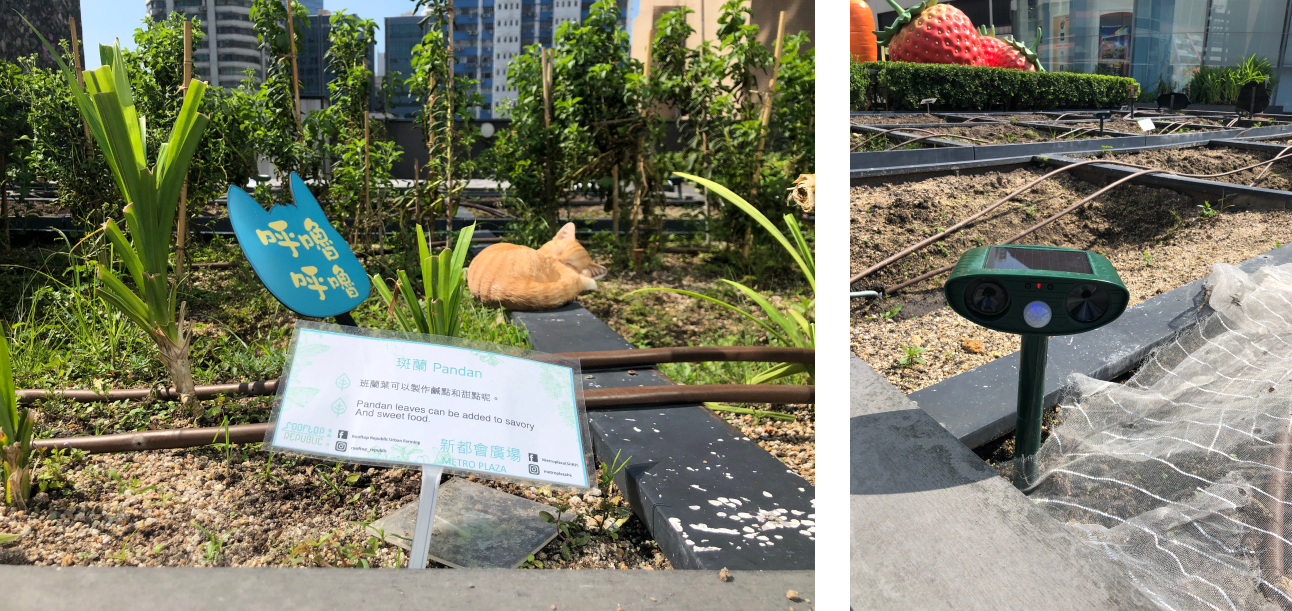
On-Site Observations
Though conducting on-site visit to one of the farms at Metro Plaza, we collected information about:
- Types of crops that are planted in their farms
- Technologies and resources that facilitate growth of crops
As such, our tool provides the respective choice of options and integrate respective resources accordingly.
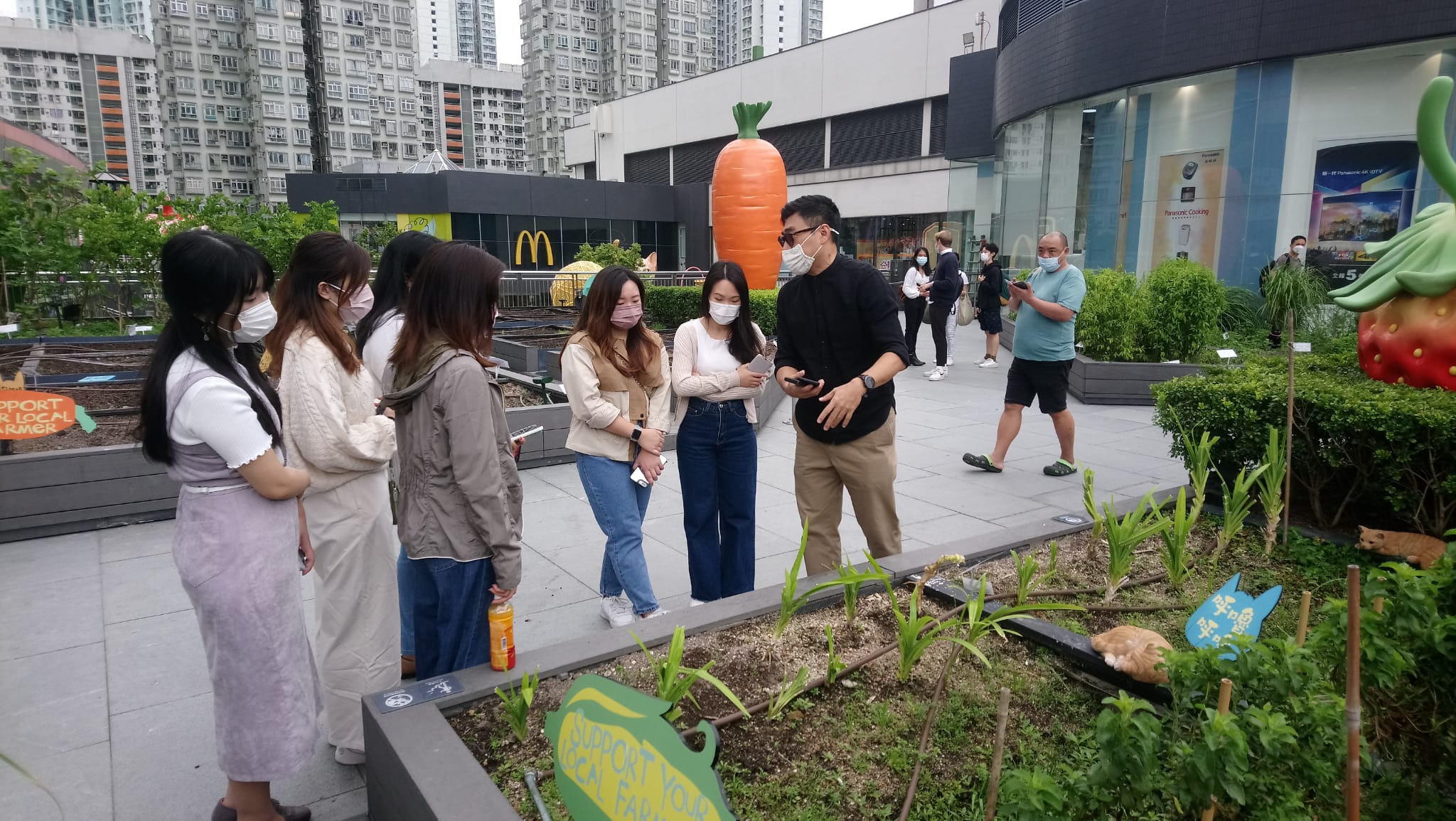
Interview
Objectives
- To understand RR PM / RR clients considerations and needs when implementing a rooftop farming program
- To understand RR team operation and their behavior on managing a rooftop farm
- To identify RR team’s working process and communication painpoints that should be addressed
- To understand RR farmers’ daily job duties
Methodology
- Conduct face-to-face interviews with 3 Farmers, 1 Farmers Manager, 1 Project Manager
- Due to time limit, we are unable to reach out to RR clients for their opinions. As a matter of expedience, we get those insights from PMs who also understand clients’ needs.
Insights and Findings
We use affinity map to gather all the insights from our research, thus making the following discoveries:
Responsibility/ Operation of team
- Project managers (PM) are responsible for communicating with stakeholders, making decision on floor plan, and assigning tasks to farmers before their shifts.
- Farmers are responsible for carrying out tasks assigned by PM every week, taking records in form of farm log, and reporting to PM regarding farm conditions.
- RR team fully reliance on Whatsapp for all task allocation, communication and records
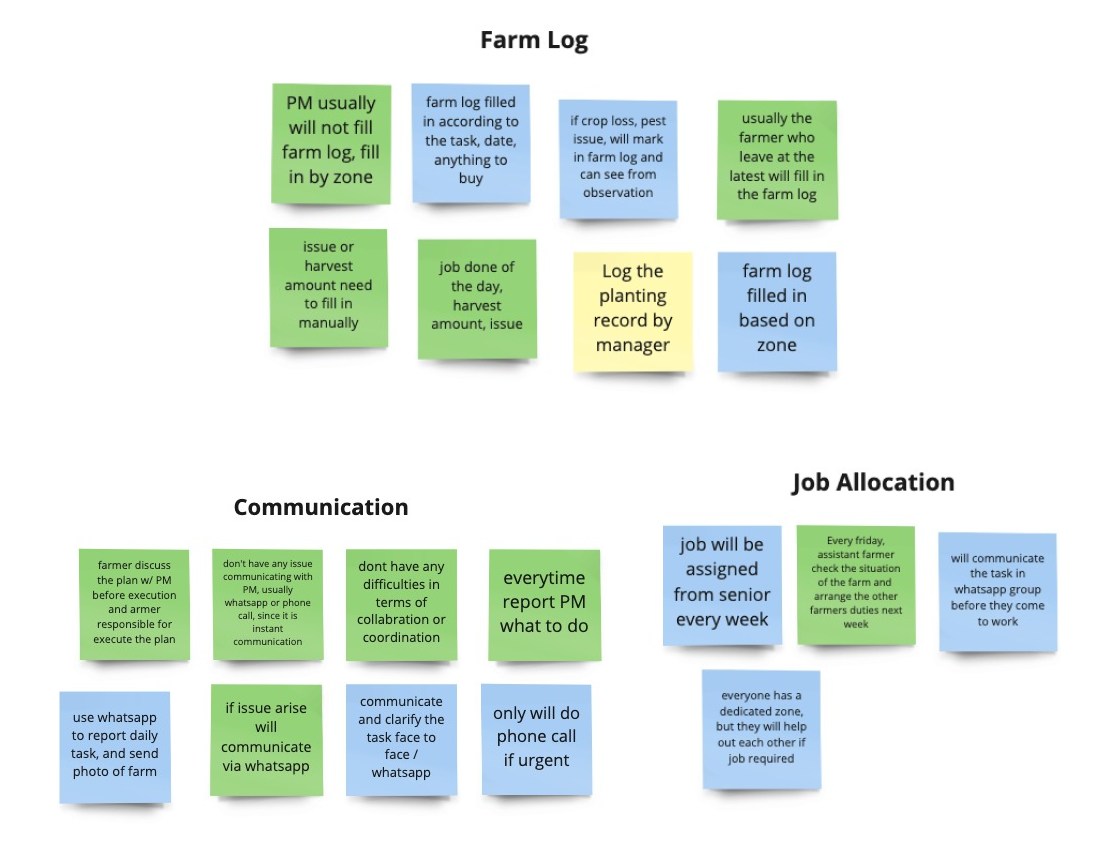
Pain Points
- Without knowing what did the last farmer did, farmers find it hard to coordinate the work with farmers in different shifts as they can only follow tasks assigned by project managers on Whatsapp, resulting missing out follow-up actions
- Farmers unaware of delivery schedule which could interrupt their work
- Farmers rely on the 24 solar terms for their schedule of watering
- Farmers prefer a mobile app over webapp
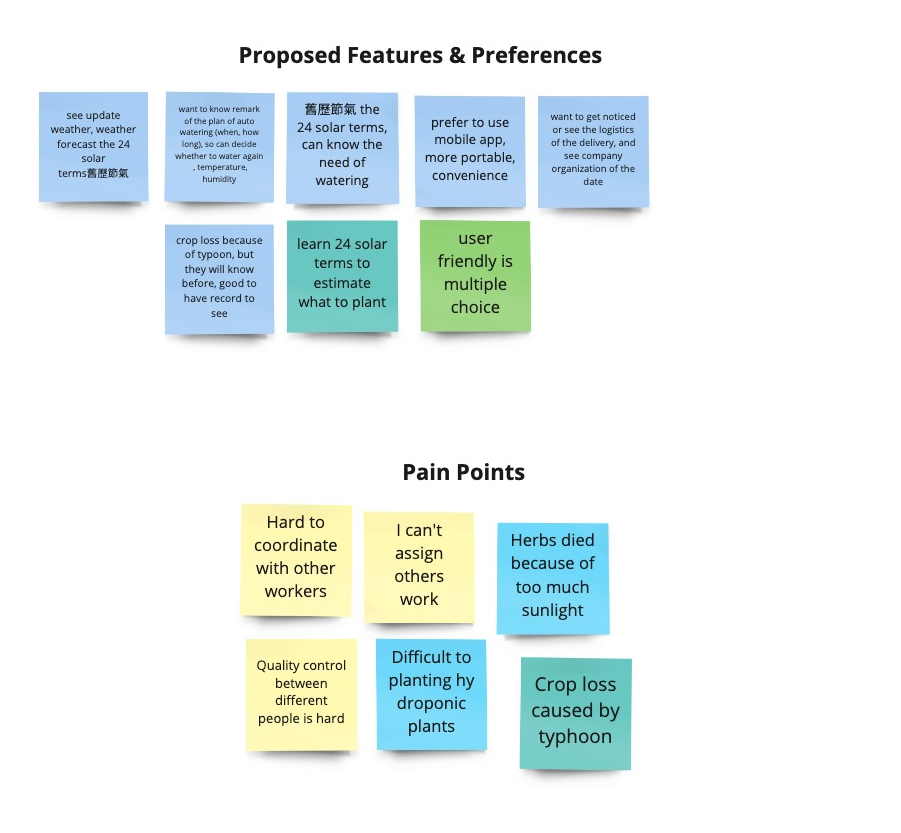
Ideate
Features for each stakeholder
One of our concerns is how to give a better differentiation of features between stakeholders (i.e. RR client, project manager, farmer), such that they are using the tool that best fit for their needs. By fully understanding the needs of each stakeholders, it gives us insights on features to be incorporated in our products.
Below are the main goals of different stakeholders:
RR project managers
- Overview on current farm condition in a detailed way
- Overview on farm forecast in a detailed way
- Assign tasks to farmers and manage team
- Farmers prefer a mobile app over webapp
RR Clients
- Overview on current farm condition in simple way
- Overview on farm forecast in a simple way
RR farmers
- Carrying out tasks assigned by PM
- Taking records of farm
- Report to PM
Service Blueprint
Through building the service blueprint, we can understand how our tool integrate with current technologies in use. We recognise the opportunity of having a crop planning tool as project managers frequently rely on crops database for communication with clients and management on crops qualities.
Below are the main goals of different stakeholders:
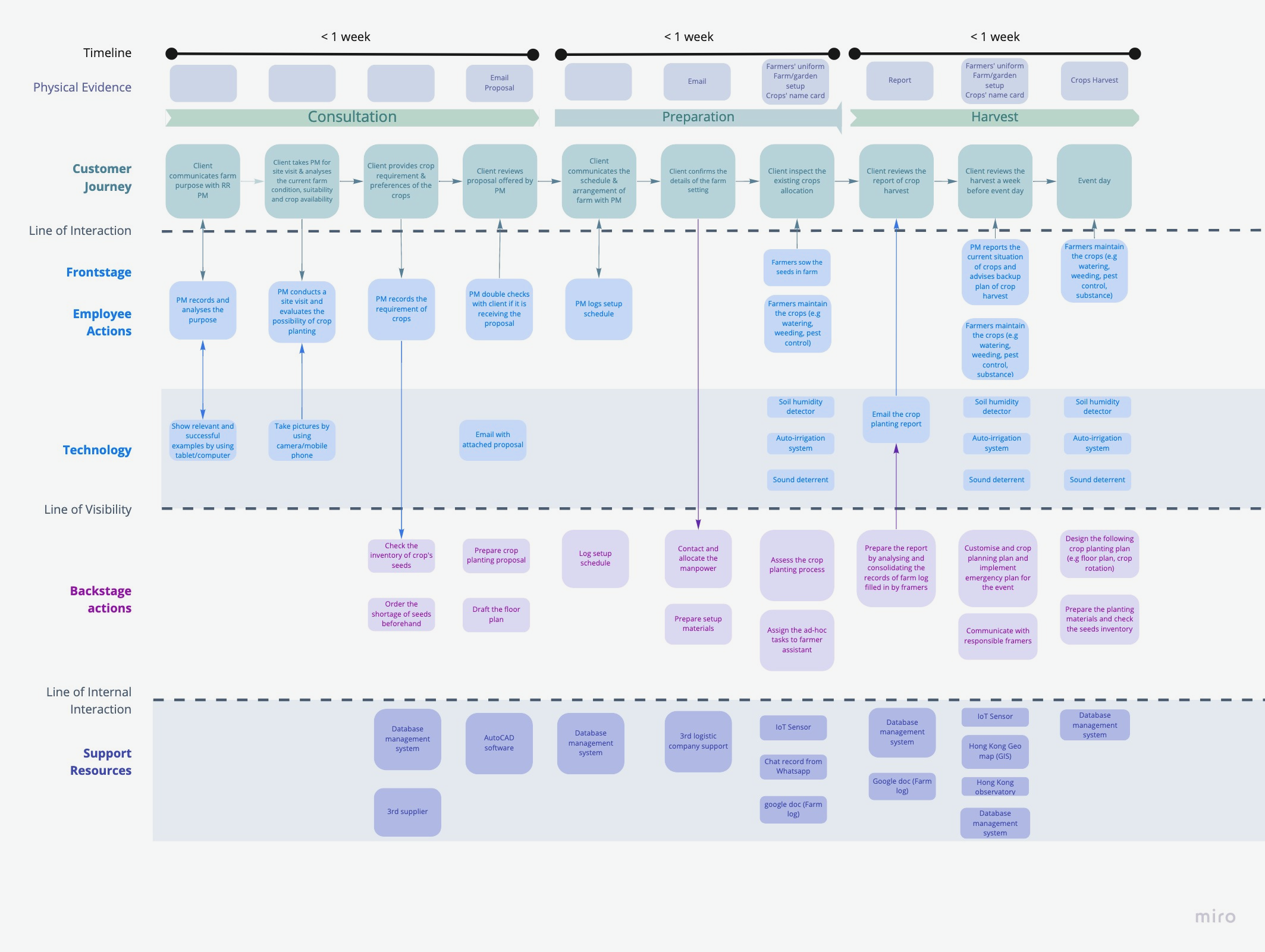
Prototype

We narrowed down the primary feature set for version one which makes it a minimum viable one. The main features are:
- Getting overview of current farm condition
- Editing farm floor plan
- Access to task allocation
- Showcasing forecast of crops growth
- Displaying weather card
For sake of conducting usability test with the farmers less proficient in English, we also created a Chinese version of prototype that they will understand.
Usability Test

Floor Plan Page
- Users revealed that they would like to visualize the farm on the tool rather than accessing to their google drive folder
- For easy management, PM plan out the farm by each column, implying each column manifesting a similar progress bar
- Legend for explaining status of farm
- Providing camera function for making records on the crops
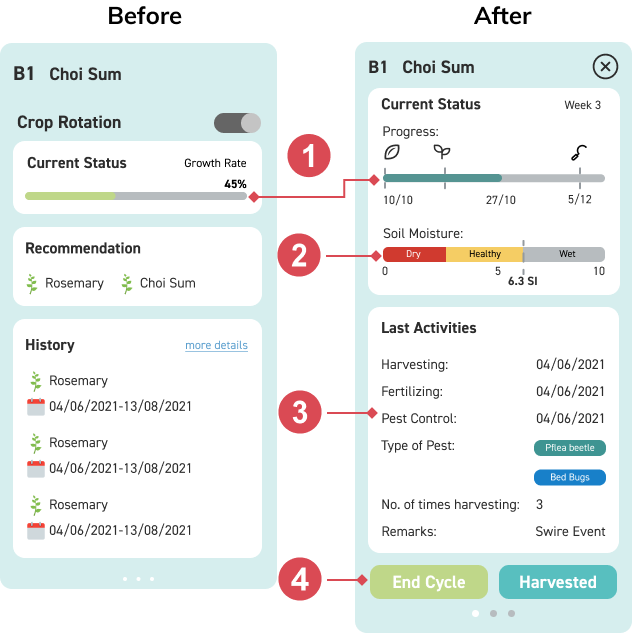
Farm Status Card
- Farmers determine the growth of crops in terms of stages (i.e. sowing, planting and harvesting) rather than in percentages
- Integration of existing automatic system that facilitate RR staff to monitor current crops condition
- Farmers revealed in their interviews that they would like to know last activities carried out so that task won’t be missed out or repeated.
- Provide flexibilty of “End Cycle” and “Harvested” regarding status of farm based on common practice of RR team

Analysis Page
- Farmers usually conduct farm assessment twice for a batch of planting (in case of loss of crops), so we incorporate two phases of assumption that enable a more accurate forecast
- Providing choice of period that allow users to get an overview of their farm with a specific time period
Final Prototype
Takeaway and Next Step
This is a precious experience that allow me to learn more about urban farming in Hong Kong. it is also a great opportunity getting to meet with the farmers and project managers.
Here are some of the takeaways from this projects:
- Make changes to plan when necessary. Though unable to reach out to RR clients within time schedule, we manage to get insights from project managers who also understand clients needs.
- Be flexible and adaptive. Target audience expand as we understand more about the team structure.
- Bring value by usability test. Despite knowing users' needs, their experience and feedback about our wireframes gives lots more value to our product.
Potential actions in the future:
- Further testing with RR clients. This helps to validate again our designs with this stakeholder
- Future Integration with existing technology. Making goods use of current available technology (IoT) to gives a real-time crop condition in the future.


